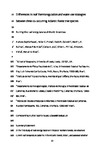Differences in leaf thermoregulation and water use strategies between three co-occurring Atlantic forest tree species
| dc.contributor.author | Fauset, S | |
| dc.contributor.author | Freitas, HC | |
| dc.contributor.author | Galbraith, DR | |
| dc.contributor.author | Sullivan, MJP | |
| dc.contributor.author | Aidar, MPM | |
| dc.contributor.author | Joly, CA | |
| dc.contributor.author | Phillips, OL | |
| dc.contributor.author | Vieira, SA | |
| dc.contributor.author | Gloor, MU | |
| dc.date.accessioned | 2018-11-26T15:05:23Z | |
| dc.date.available | 2018-11-26T15:05:23Z | |
| dc.date.issued | 2018-07 | |
| dc.identifier.issn | 0140-7791 | |
| dc.identifier.issn | 1365-3040 | |
| dc.identifier.uri | http://hdl.handle.net/10026.1/12895 | |
| dc.description.abstract |
<jats:p>In the first study of leaf energy balance in tropical montane forests, we observed current leaf temperature patterns in the Atlantic forest, Brazil, and assessed whether and why patterns may vary among species. We found large leaf‐to‐air temperature differences that were influenced strongly by radiation and differences in leaf temperature between 2 species due to variation in leaf width and stomatal conductance. We highlight the importance of leaf functional traits for leaf thermoregulation and also note that the high radiation levels that occur in montane forests may exacerbate the threat from increasing air temperatures.</jats:p> | |
| dc.format.extent | 1618-1631 | |
| dc.format.medium | Print-Electronic | |
| dc.language | en | |
| dc.language.iso | en | |
| dc.publisher | Wiley | |
| dc.subject | boundary layer | |
| dc.subject | energy balance | |
| dc.subject | functional traits | |
| dc.subject | leaf temperature | |
| dc.subject | leaf width | |
| dc.subject | montane | |
| dc.subject | radiation | |
| dc.subject | stomatal conductance | |
| dc.subject | transpiration | |
| dc.subject | tropical forest | |
| dc.title | Differences in leaf thermoregulation and water use strategies between three co-occurring Atlantic forest tree species | |
| dc.type | journal-article | |
| dc.type | Journal Article | |
| dc.type | Research Support, Non-U.S. Gov't | |
| plymouth.author-url | https://www.webofscience.com/api/gateway?GWVersion=2&SrcApp=PARTNER_APP&SrcAuth=LinksAMR&KeyUT=WOS:000435808900012&DestLinkType=FullRecord&DestApp=ALL_WOS&UsrCustomerID=11bb513d99f797142bcfeffcc58ea008 | |
| plymouth.issue | 7 | |
| plymouth.volume | 41 | |
| plymouth.publication-status | Published | |
| plymouth.journal | Plant, Cell and Environment | |
| dc.identifier.doi | 10.1111/pce.13208 | |
| plymouth.organisational-group | /Plymouth | |
| plymouth.organisational-group | /Plymouth/Faculty of Science and Engineering | |
| plymouth.organisational-group | /Plymouth/Faculty of Science and Engineering/School of Geography, Earth and Environmental Sciences | |
| plymouth.organisational-group | /Plymouth/REF 2021 Researchers by UoA | |
| plymouth.organisational-group | /Plymouth/REF 2021 Researchers by UoA/UoA06 Agriculture, Veterinary and Food Science | |
| plymouth.organisational-group | /Plymouth/Users by role | |
| plymouth.organisational-group | /Plymouth/Users by role/Academics | |
| dc.publisher.place | United States | |
| dcterms.dateAccepted | 2018-03-22 | |
| dc.identifier.eissn | 1365-3040 | |
| dc.rights.embargoperiod | Not known | |
| rioxxterms.versionofrecord | 10.1111/pce.13208 | |
| rioxxterms.licenseref.uri | http://www.rioxx.net/licenses/all-rights-reserved | |
| rioxxterms.licenseref.startdate | 2018-07 | |
| rioxxterms.type | Journal Article/Review |


